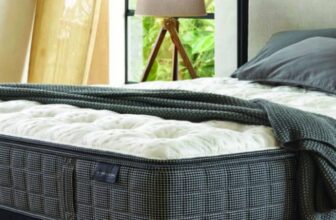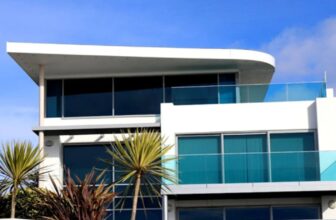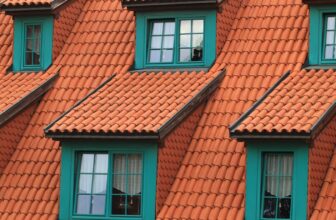Thoroseal vs Drylok – What’s The Difference?
Keeping the house dry is essential for creating a healthy living environment.
Humidity caused by water leakages will not only ruin the walls and floors but can also have a damaging effect on the health of your family.
That’s why it’s so important to prevent water from the environment from seeping inside, especially in areas such as the basement, which are most likely to suffer from an increased level of moisture.
When looking to waterproof your house, you’ll be able to choose between multiple solutions, but not all of them will provide the same result.
Thoroseal and Drylok are two waterproofers with a proven track record and both are among the most popular options on the market.
If you’ve narrowed down your choice to these two products, the Thoroseal vs Drylok comparison below should help you make up your mind and choose the one that will best suit your needs.
Table of Contents
Thoroseal – Information
Thoroseal is a cement-based coating, usually used for interior and exterior waterproofing of above and below-grade concrete and masonry surfaces.
It typically comes in powder form and features a mix of Portland cement, well-graded sands, and various additives.
It can be used for house waterproofing needs, but it’s often employed on larger-scale infrastructural projects, such as tunnels, bridges, or dams.
However, it’s not designed for use on already painted surfaces, which somewhat limits its scope of application for household projects.
Still, Thoroseal offers some significant advantages when compared to other waterproofing products.
It features great resistance to hydrostatic pressure with a resistance rating of 20 PSI.
In addition, it has great water vapor permeability, can be used above and below ground level, and offers great bond strength, becoming an integral part of the substrate.
However, it features a fairly poor choice of colors, with only white and grey available.
Drylok – Information
Drylok is probably the most popular waterproofing product for home DIY projects, mainly because it’s widely available, easy to use, and relatively cheap.
It’s mostly used for basement waterproofing protection and is typically applied to masonry and concrete surfaces, including brick, stucco, or cinder blocks.
Drylok works by penetrating tiny pores in foundations, walls, or floors and sealing them by creating an impenetrable protective layer to prevent water leakage.
It’s also very efficient in preventing the buildup of efflorescence (powdery salty deposit).
As it’s available in different variants, Drylok is suitable for work on a wide range of surfaces and in different environments.
Plus, you’ll be able to choose between 6 colors and 4 tints, so you can easily fit it with the rest of the space.
The finish provided by Drylok isn’t very smooth, but rather textured and sandy, and can be painted over or left as it is.
Thoroseal vs Drylok – What’s the Difference
Even though they share some similarities, Thoroseal and Drylok are two very different products and the distinctions between the two should factor in your decision of which one to use.
Below is a short overview of the major factors that separate these two waterproofing products.
Application
Both Thoroseal and Drylok require application in two coats, but Drylok is much easier to use and more suitable for DIYers with no professional experience.
When using Thoroseal, both the application, and mixing are somewhat complicated and can be a bit challenging for a typical homeowner.
On the other hand, Drylok is very simple to apply and the process doesn’t differ much from a regular paint job.
Finish and Coverage
While neither of these waterproof provides a smooth or glossy finish, the Drylok coat is still a bit more even and even matte, while the Thoroseal finish is typically rough and heavily textured.
When it comes to coverage, the advantage is clearly on the side of Drylok. With a gallon of Drylok waterproofer, you can cover roughly 100 square feet of space.
The coverage rate of Thoroseal is much lower, and you can cover only around 55 square feet with a gallon of mixture.
Color Availability
As I already mentioned, Drylok waterproofing products feature a fairly decent range of available colors.
There are 6 colors to choose from, but with 4 tints also available, you can create a number of different tones to get the coat shade you want.
On the other hand, with Thoroseal, you’ll face a limited number of color options, with only white and grey to choose from.
Performance
Each of these products works in a similar way, by penetrating the pores in concrete, but Thoroseal will provide a higher bond strength than Drylok.
Drylok, however, is known for its excellent adhesion properties and can be used on a range of different surfaces.
Plus, it dries fairly quickly, so you’ll be able to finish your project fairly quickly.
However, as it doesn’t expand or contract but fully prevents water from coming to the surface, it may start to crack over time due to the pressure from the pressurized bubbles inside the wall.
Thoroseal takes more time to dry, but it offers superb strength and durability, so it performs great even when used on surfaces that are exposed to a lot of wear and tear.
Plus, with a resistance rating of 20 PSI, it’s capable of withstanding more hydrostatic pressure than Drylok which is rated at 10 PSI (or 15 PSI for Drylok Extreme).
Conclusion
Both Thoroseal and Drylok will work well to prevent water from penetrating concrete and masonry surfaces, but each of them will provide the best performance only under certain conditions and for certain applications.
There’s no doubt that Thoroseal and Drylok are excellent waterproofing products in their own way, but you should carefully consider the advantages and downsides of each of them and choose the one that’s more suitable for the project ahead of you.
In general, Drylok is a better choice for typical DIY projects in basements and similar spaces, as it’s very versatile, easy to use, and dries quickly.
Thoroseal should be used on projects that require more durability and strength and is ideal for objects such as water reservoirs, fountains, swimming pools, and similar structures.



















































































